How punk and history emerged from Belfast alleyways

Artwork dedicated to the punk movement in Wilson's Court - the music in Northern Ireland spawned from such entries in Belfast
- Published
Belfast alleyways are some of the most iconic and historical places in the city.
Once hubs of life, over time the entries had become forgotten and run down.
But 11 of them have now been renovated as part of Belfast City Council’s Entries Project.
The idea was developed to help make the city centre more accessible following the large Bank Buildings fire in August 2018 which caused disruption for much of the city centre.
What are the entries?

Joy's Entry is one of the entries that has been redeveloped with different artwork and designs
The entries are a network of narrow alleyways in Belfast dating back to the 1600s.
Local historian and tour guide Dr Tom Thorpe told BBC News NI: "The entries formed the early town plan of Belfast.
"They run off the High Street, similar to the closes in Edinburgh and the lanes in Brighton.
"This is where Belfast starts as a small medieval settlement."
He added: "They became hubs of life."
A walk through the entries
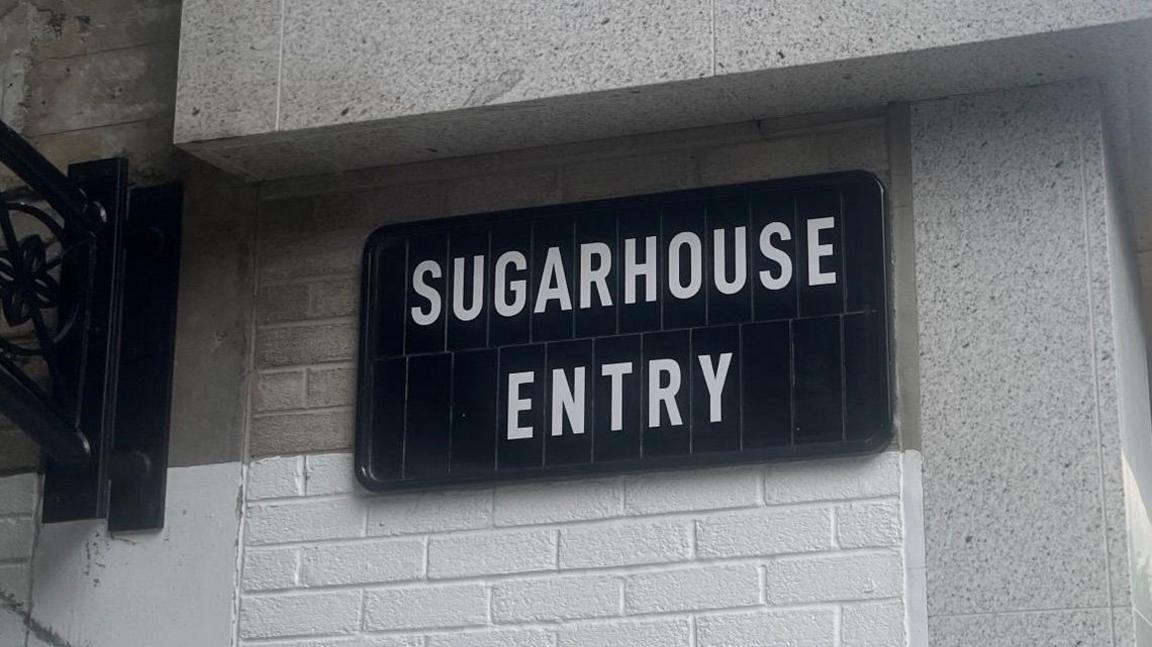
Sugarhouse Entry is one of 11 entries that have been redeveloped
Sugarhouse Entry is the one that has been most recently developed, after being closed for more than half a century.
Henry Joy McCracken, the leader of the United Irishmen, was brought there by his sister, anti-slavery campaigner Mary Ann McCracken, in a vain attempt to revive him after his public hanging for treason in 1798.
Dr Thorpe said it was commonplace at that time to seek medical attention after an execution until they "became more scientific".
The United Irishmen sought to unite different religious groupings to bring about an independent Ireland.
Sugarhouse Entry survived the Blitz bombings in 1941 but the Troubles saw the entry close in 1972 - it re-opened earlier this month.
Sugarhouse Entry gets its name from the sugar refinery that was situated at the site.
Dr Thorpe added: "Belfast imported a lot of sugar. This is a connection to Belfast's part in the slave trade.
"The sugar was harvested by enslaved people across the Atlantic Ocean."

One of the best known areas of Belfast is Pottinger's Entry that runs between Ann Street and High Street
Pottinger's Entry is named after the first Presbyterian sovereign mayor of Belfast at the time, Thomas Pottinger.
Towards the bottom of the entry is a bar where coaches used to stop in the 1800s.
"People would stop here and stay overnight before carrying on with their travels the next day," said Dr Thorpe.
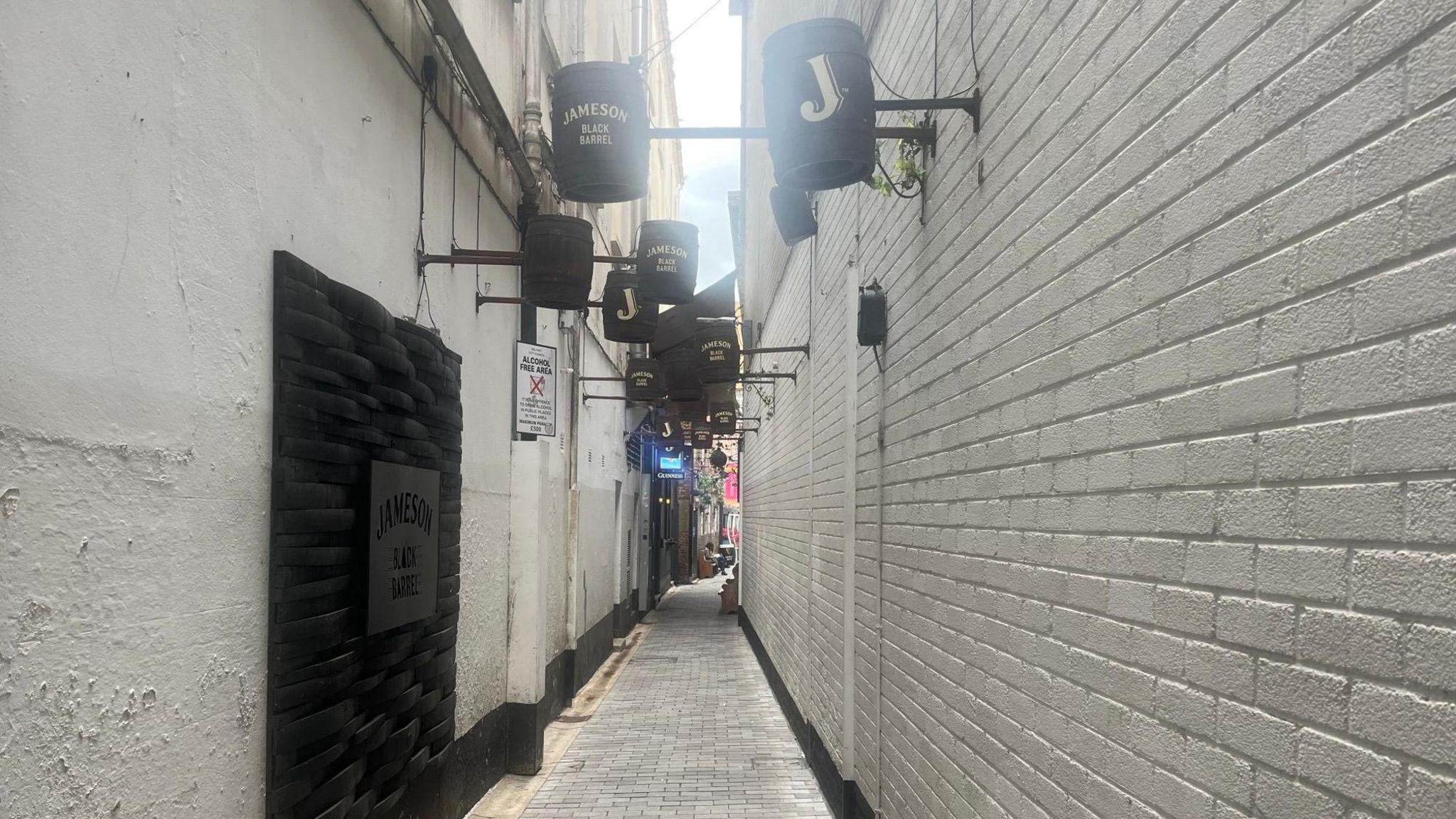
Joy's Entry is named after the Joy family who would go on to found one of Northern Ireland's main daily papers
Joy's Entry, off Ann Street, was named after the Joy family who would go on to found the Belfast News Letter. It is the world's oldest English-language daily newspaper still in publication, having first been printed in 1737.
Along Joy's Entry is a bar where Henry Joy McCracken is said to have been held prior to his hanging.
At the end of the entry there is a huge mural to the writer, abolitionist and former slave, Olaudah Equiano, who came to Belfast in 1791 "to promote his account of being a slave," added Dr Thorpe.
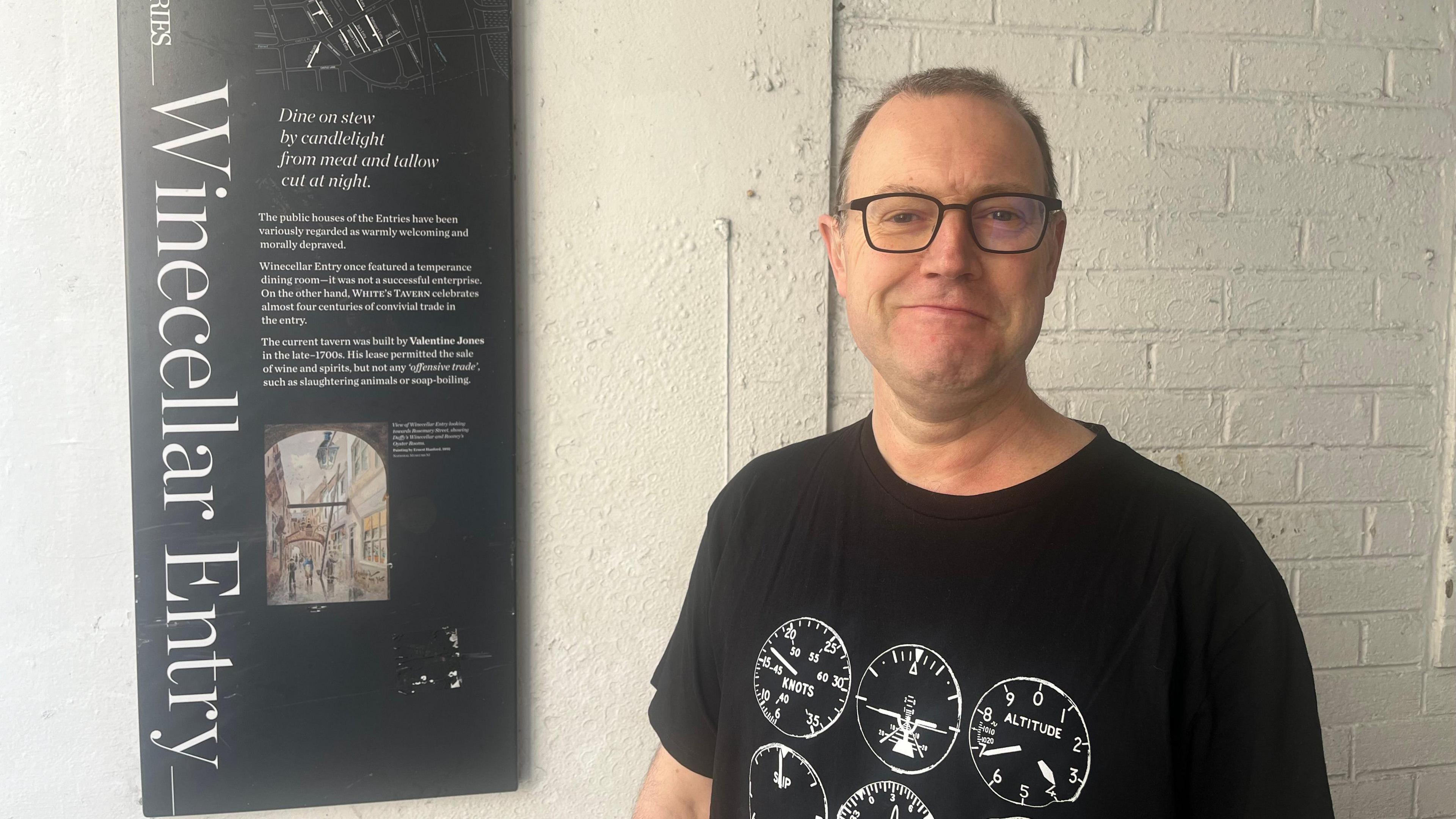
Historian and tour guide Dr Tom Thorpe at the entrance to Winecellar Entry
Famous for selling wine, Winecellar Entry is home to what is claimed to be the oldest pub in Belfast - although this is disputed by some.
"What's intriguing about the entry is that a canon appears to be set as a bollard in the ground," Dr Thorpe told BBC News NI.
Walking through these entries opens up a part of Belfast's history almost forgotten in time.
'Unique and special place'
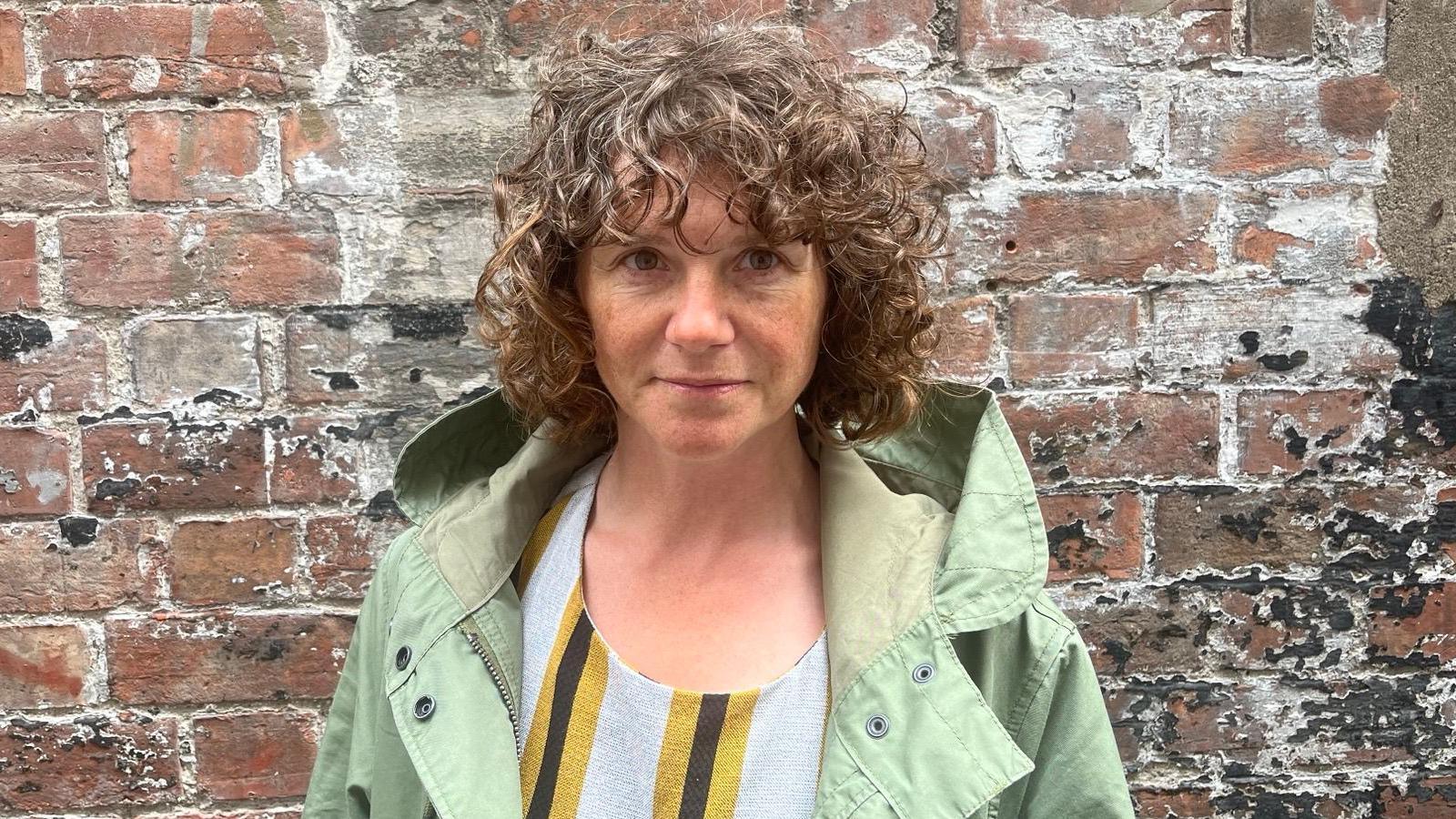
Gemma Reid was part of a company that supported Belfast City Council in rejuvenating the entries
Along the entries a host of different artwork adorns the walls.
Researcher Gemma Reid said it was commissioned to "draw your eyes into the entry and point towards the unique and diverse stories associated with these spaces", and "make them more inviting for people".
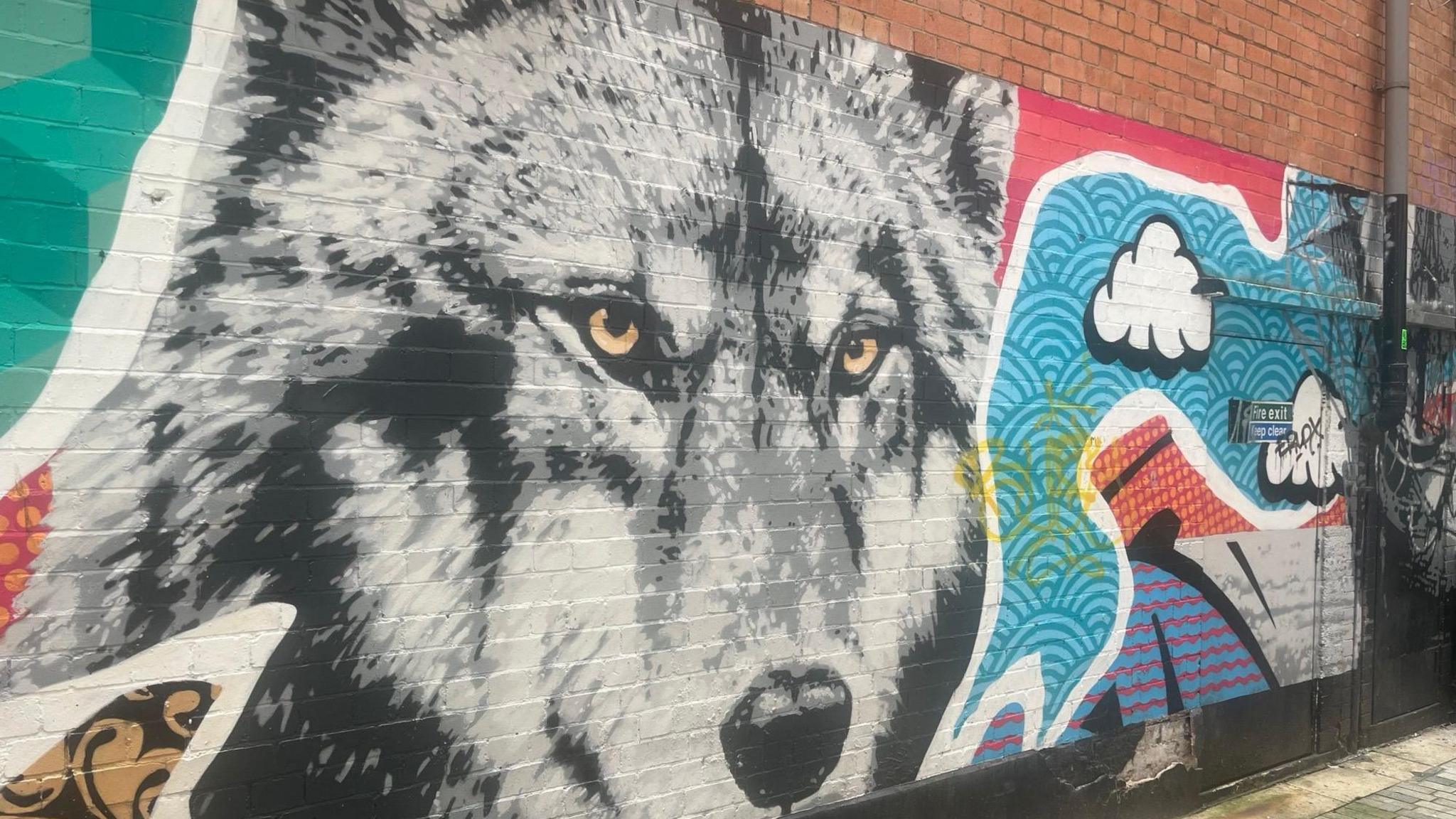
Artwork on a wall in Crown Entry depicts a wolf, an animal that in ancient Irish mythology was often associated with bravery and loyalty
Artists from all over Ireland were asked to create murals for the entries.
"These briefs were to highlight what a unique and special place the entries are to Belfast city centre," Ms Reid added.
However, the Covid-19 pandemic made the project "stop start", she said.
The history of the entries is indeed illustrated on their walls.
"There are trading ships that highlight Belfast being such an important port," added Ms Reid.

Artists from all over Ireland helped create artwork like this mural in Pottinger's Entry
She thinks some of the artwork is as relevant now as ever.
Ahead of Joy's Entry there is a quote from poet and playwright Louis MacNeice.
It reads: "A city built upon mud, a culture built upon profit, free speech nipped in the bud, the minority always guilty."
Ms Reid added: "Although these words are from 100 years ago, they are still relevant today.
"The entries are the spaces in between where everyone, all classes, political beliefs, religions and backgrounds could talk.
"The United Irishmen, the trade union movement, the punk movement. They all emerged out of the entries."
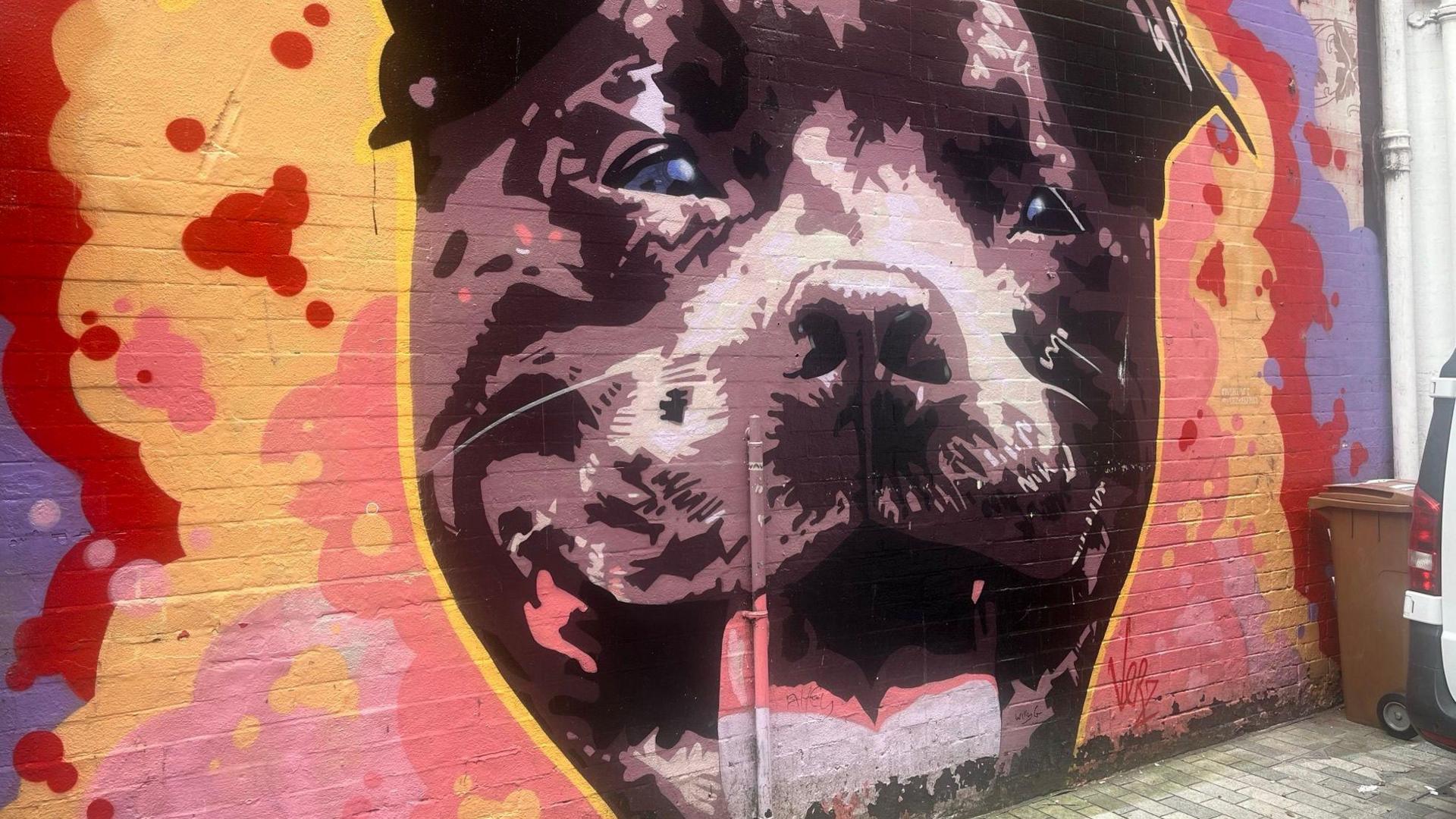
This mural is in Pottinger's Entry - the brief given to artists was to show how unique and special Belfast is
What entries have been renovated?
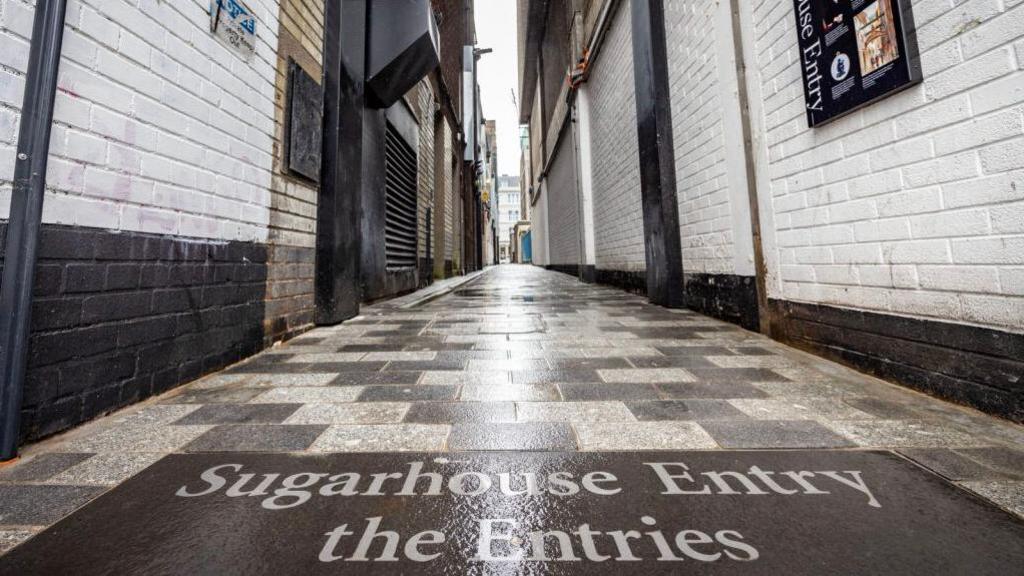
Sugarhouse Entry was where the United Irishmen would meet
The 11 entries renovated since 2019 are:
Castle Arcade
Cole’s Alley
Crown Entry
Joy’s Entry
Pottinger’s Entry
Wilson’s Court
Winecellar Entry
College Street Mews
High Street Entry
Patterson’s Place
Sugarhouse Entry